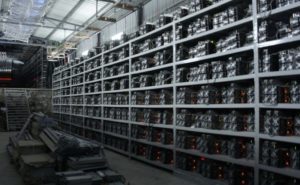How Bitcoin Mining Works
What is Bitcoin mining?
 Bitcoin mining was made to be a complicated process. Why? Because such efforts and resources requiring process will not allow it to go up and down. At the moment, the amount of blocks that get found daily with the help of mine-workers show stable results. Each block should include a proof-of-work. Only, in this case, they will be considered appropriate. How do they become valid? Other Bitcoin nodes approve them every time they get a new block. Bitcoin network uses the hash cash proof-of-work option.
Bitcoin mining was made to be a complicated process. Why? Because such efforts and resources requiring process will not allow it to go up and down. At the moment, the amount of blocks that get found daily with the help of mine-workers show stable results. Each block should include a proof-of-work. Only, in this case, they will be considered appropriate. How do they become valid? Other Bitcoin nodes approve them every time they get a new block. Bitcoin network uses the hash cash proof-of-work option.
The most significant goal is to allow Bitcoin nodes to reach a safe and stable result. A mining in the Bitcoin system is also a mechanism that is used for adding bitcoins into the system. The mine-workers get all payments fees as well as the subsidy of all new coins. This serves the purpose of distributing new coins in a decentralized way as well as stimulating people to offer a secure system.
Bitcoin mining reminds of mining other products. It requires a lot of efforts, it slowly creates a new currency that is available at the rate that is the same for gold and other products.
What is proof-of-work?
A proof-of-work is a part of data that complicated, expensive, or took a lot of time for the manufacture to satisfy specific criteria. It has to be trivial to check whether those requirements match the given requirements.
A proof-of-work can be a random process that can have a lot of errors. The mistakes are needed very much because they can establish an actual proof-of-work. Bitcoin network uses the hash cash proof-of-work.
What is Bitcoin mining difficulty?
There are several problems that are included in mining. The first one is the computationally-difficult problem. Bitcoin mining a complicated because the SHA256 hash of a block’s header has to be lower or match the target. Only, in this case, the block will be approved. The problems can be explained simpler: the hash of block has to start from several zeros. The chance of defining the hash that starts from several zeros is very low, therefore, it is important to make a lot of attempts. To generate a new hash in every round, a nonce is incremented. You can find more exact information about mining difficulty to understand why it was created and how it helps to mine in general.
The second problem is Bitcoin network difficulty metric. This is a measure of how difficult it is to find a new block in comparison with the easiest one that has even been found. It gets reciunted every 2016 blocks that were generated in 14 days and were mined at the same difficulty. On average, it gives a new block every 10 minutes.
When more mine-workers join the process, the rate of block creating will grow. When the rate of generating new blocks increasing, the mining difficulty also increases to compensate. This will bring the rate of blocks creation down. All blocks that were released by fraud mine-workers and do not match the target will be denied by the network and will have no value.
What is block reward?
When a block is found, its discoverer can take a certain number of bitcoins that is agreed in the network. Nowadays, the reward equals 25 bitcoins. When new 210,000 blocks will be found, the reward will half. Also, a mine-worker gets a reward that is paid by users that send transactions. The fee stimulates a mine-worker to all transactions in the block. In the future, when the number of new bitcoins that were found by mine-workers are allowed to create in every block decreases, the fees will bring a bigger profit from mining.



